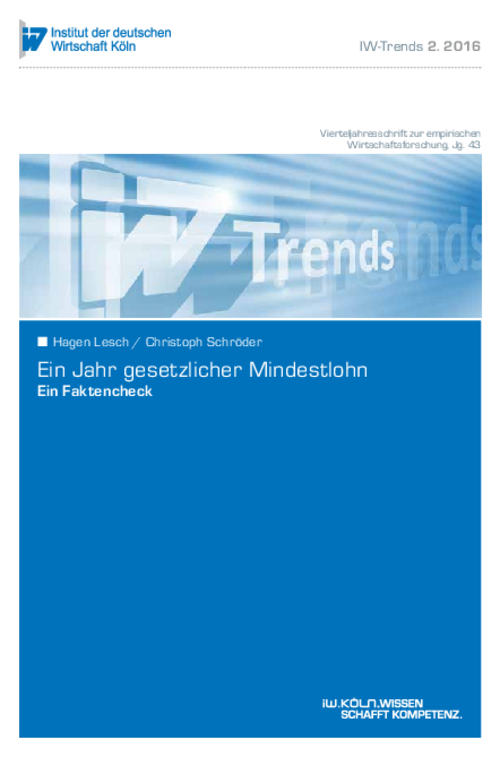The introduction of the legal minimum wage is believed to have affected some 4 million employees. Since the minimum wage was introduced during a phase of dynamic job growth, the impact on the labour market has so far been slight.

A Fact Check: A Year of the Legal Minimum Wage
IW-Trends

The introduction of the legal minimum wage is believed to have affected some 4 million employees. Since the minimum wage was introduced during a phase of dynamic job growth, the impact on the labour market has so far been slight.
In January 2015, the number of those taking up jobs subject to social insurance contributions and those leaving marginal employment, at 94,516 and 73,941 respectively, were both higher than the 2014 annual average. Thus jobs subject to social insurance contributions increased at the cost of mini-jobs. Whether jobs were actually lost in the process is unclear. What is clear, however, is that the hike in labour costs induced by the minimum wage was passed on in prices, a phenomenon most apparent in eastern Germany. Equally incontrovertible is that the wage structure has been compressed. At the beginning of 2015 wage increases for unskilled workers markedly exceeded the general increase, again particularly in eastern Germany. However, the minimum wage has not proved an effective instrument for combating poverty. The number of those needing social security benefits to supplement their wages has barely fallen.

Hagen Lesch / Christoph Schröder: Ein Jahr gesetzlicher Mindestlohn – ein Faktencheck
IW-Trends

More on the topic

The 9th IW Survey of Further Training
In 2016 some 85 per cent of companies in Germany were active in continuing vocational training, using a broad mix of methods.
IW
Has the German Economy Reached its Limit?: Skilled Labour Shortages as a Brake on Growth
The German economy is performing significantly better than was expected in the first few months of this year. During the course of 2017, certain early fears – especially of a weakening of the global economy due to increasing protectionism – have proved ...
IW